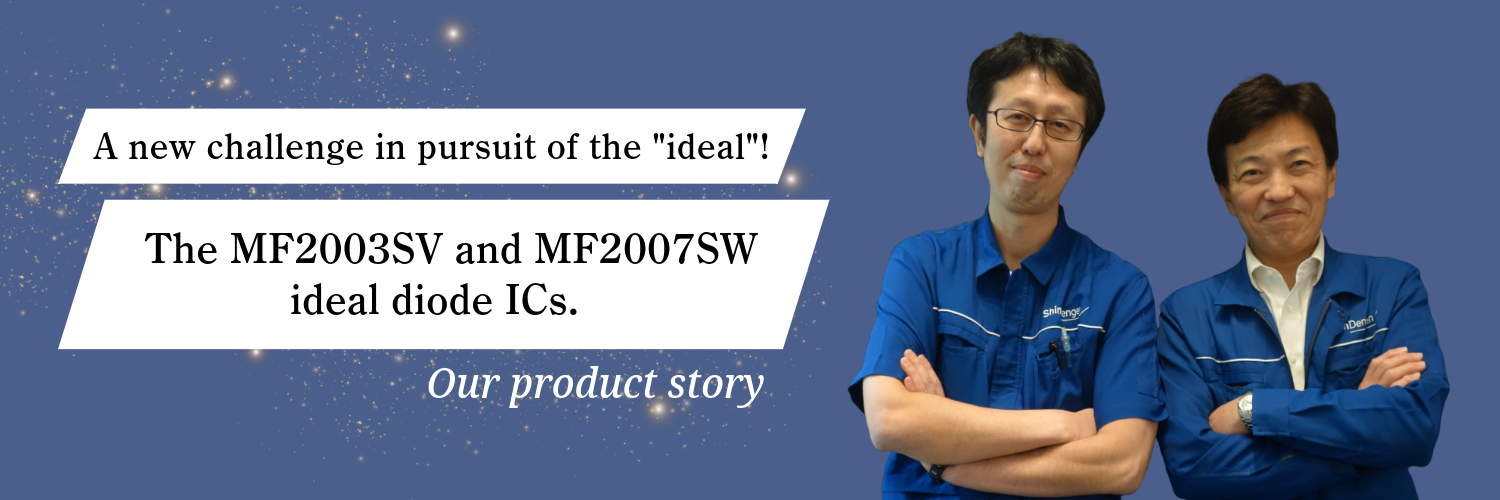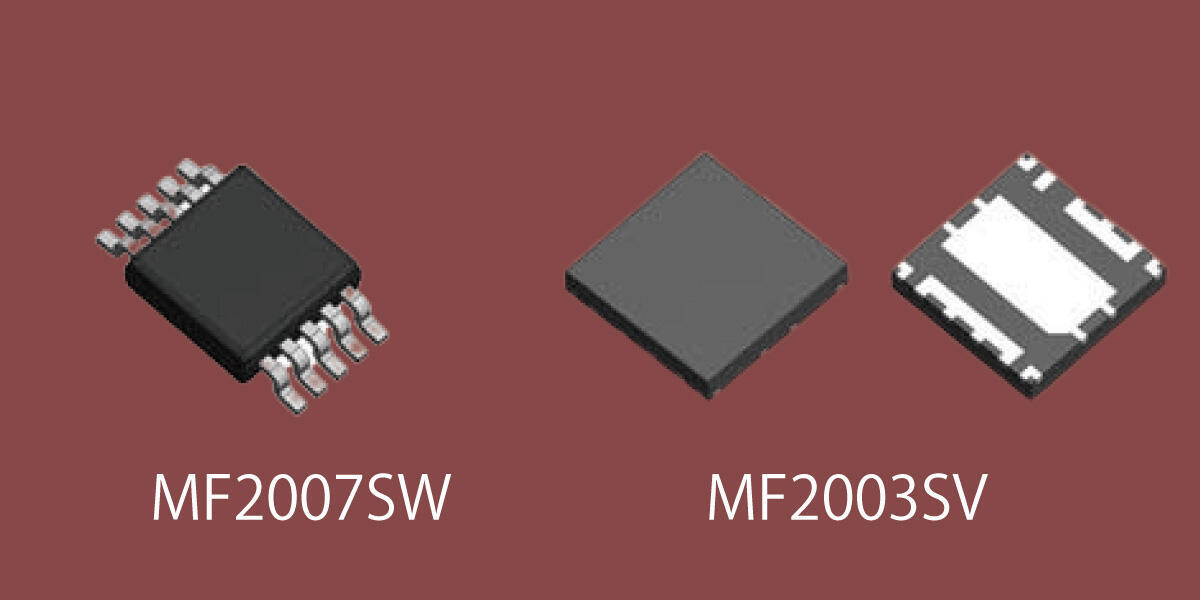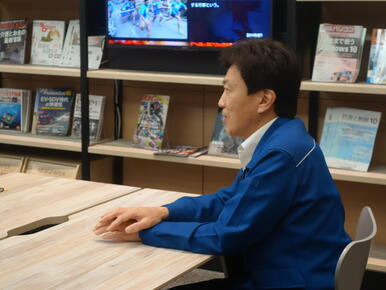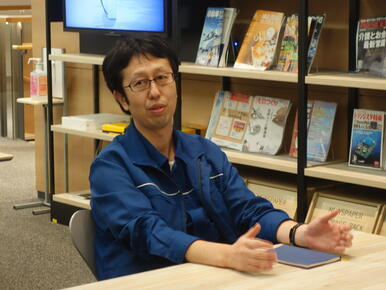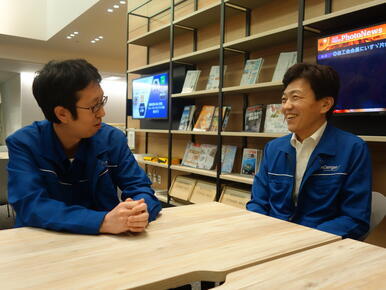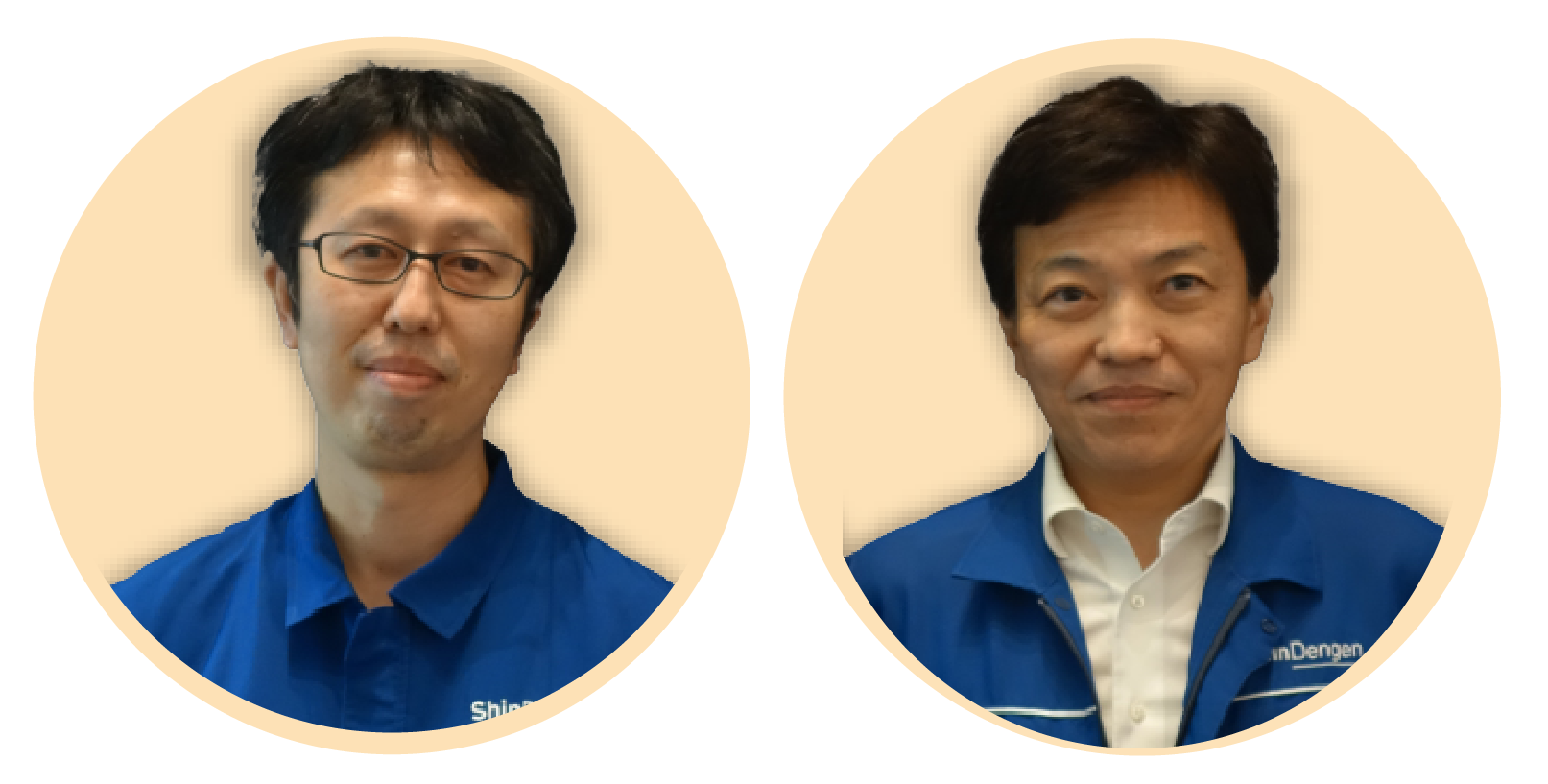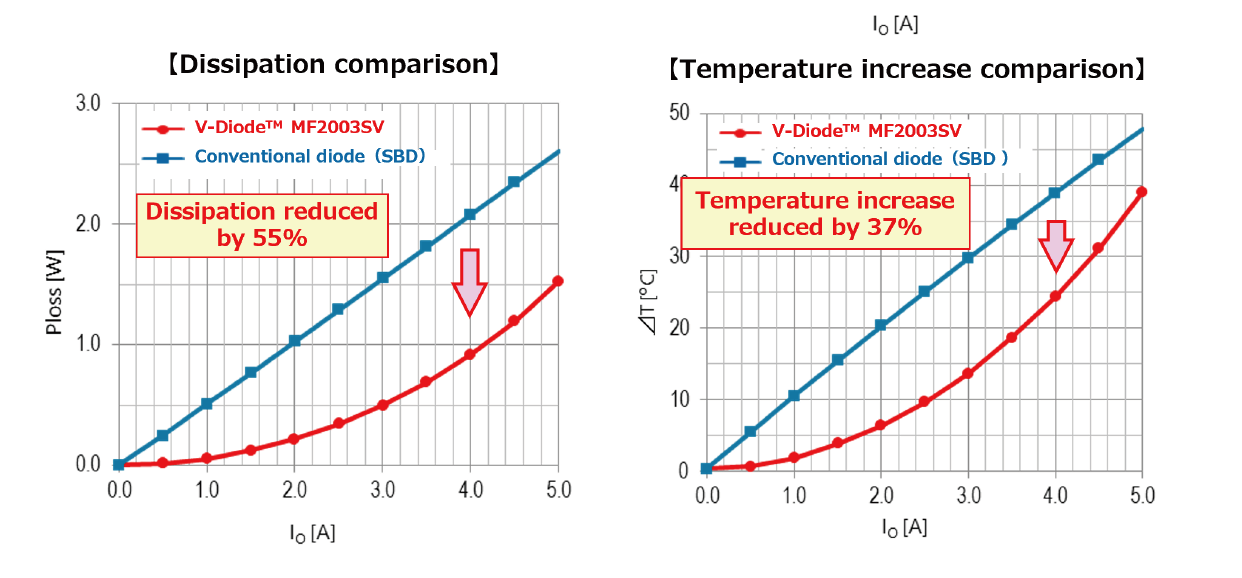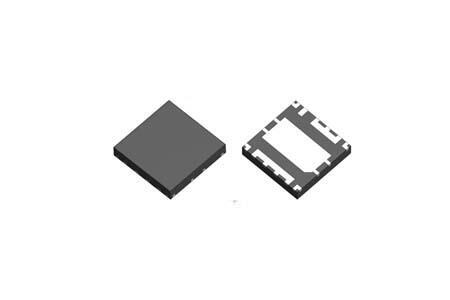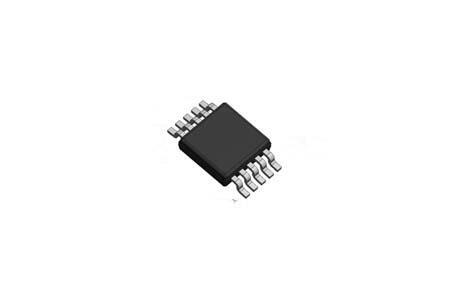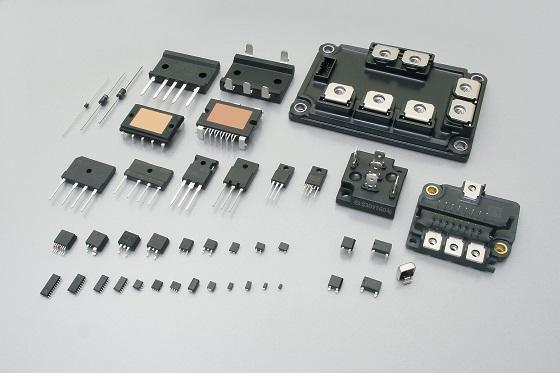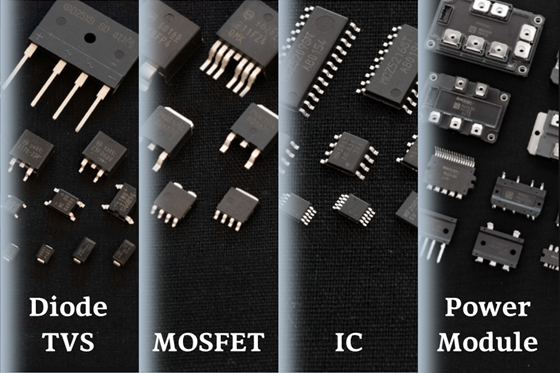- TOP
- Lineup
- Our Product Story
- A new challenge in pursuit of the "ideal"! The MF2003SV and MF2007SW ideal diode ICs.
A new challenge in pursuit of the "ideal"! The MF2003SV and MF2007SW ideal diode ICs.
(Right)
Shunsuke Kimura
IC Development Sect. 1 Development Dept.
Technology & Development Center.
A new challenge in pursuit of the "ideal"! The MF2003SV and MF2007SW ideal diode ICs.
(Lef)
Kazuhiko Saito
Senior Specialist / Semiconductor Engineer
Development Dept.
Technology & Development Center.
Mr. Saito works on development of ideal diode IC series and studying the feasibility of new IC development projects. He is also in charge of startup of products after the introduction of mass production as well as FAE (Field Application Engineer) type work.
There have been rapid increases in multi-functionality and advanced functionality in automobiles recently, which has also resulted in an increase in the power consumption of ECU (Electronic Control Units) installed in vehicles. Conventionally, diodes have been used for reverse connection protection and reverse current protection elements in ECU input components, however increased dissipation and heat generation from diodes resulting from increased current were impediments to device heat dissipation measures and downsizing. Ideal diode ICs contribute to the resolution of these types of issues. Switching to ideal diode ICs makes it possible to reduce conduction loss, temperature increases, and mounting area. In this edition we will take a look at the MF2003SV and MS2007SW ideal diode ICs newly released by Shindengen.
Contents
What is an ideal diode IC?
An ideal diode IC is an IC which operates like a diode by being combined with a MOSFET. Conventional diodes face issues of dissipation and heat generation when high current flows through them. IC which can act as "ideal" diodes and reduce these issues to as close to zero as possible are called "ideal diode IC".
What spurred the development of the first ideal diode IC, the MF2003SV?
Saito:A certain customer consulted with us about MOSFET installed for reverse current protection in the input components of a vehicle battery ECU. Under normal circumstances, diodes are most often used for reverse current protection, however there are cases where MOSFET are used instead when diodes are insufficient to deal with flows of high current. This customer used MOSFETs to handle the large current, but was having issues with reverse current still flowing under certain usage conditions.
Diodes are one of Shindengen's core products, and diodes are often used in battery input components, so our company had a great deal of technological knowhow related to battery input components based on our past achievements. We also have a proven track record of numerous automotive applications, so we had faith in both our product reliability and in terms of follow-up after adoption.
The customer had an appreciation for these strengths of Shindengen which led to them contacting us for consultation. In order to satisfy the customer's expectations, we were determined that "we had to be able to provide devices which resolved their issues" utilizing our technology and knowhow, and began development accordingly.
A new challenge. Creating new proposals based on past achievements and reliability.
Saito:Semiconductor products are often not adopted if they do not have a proven track record in the market. This trend is especially strong in applications such as the automotive market which has very strict standards, so there is normally a very high set of hurdles to proposing a new product like ideal diode ICs.
At first, we thought we could resolve these issues using the diodes which are our company's specialty, or possibly the MOSFET which the customer had previously been using. For short term solutions, we had no choice but to propose the use of diodes and MOSFETs to the customer, however with MOSFET alone reverse current would flow when the battery voltage dropped, which meant they would not solve the customer's issues, and if reverse current countermeasures were required and the shift towards higher currents continued, then it would become necessary to use multiple diodes. This would mean an increase in the number of components, making downsizing more difficult. In order to adapt to the future automotive market, where the shift towards larger current would continue to accelerate, we determined it would be good to expand our lineup to include IC with built-in MOSFET which would operate like diodes, and that determined the direction our development would take.
During the development process, we considered what types of functions could be turned into products to match customer needs, and then struggled to realize these ideas with circuit technologies. In order to reduce dissipation in higher current ranges we tried a variety of different technologies to lower MOSFET Ron. However, doing so meant that costs would increase... In the end, we were able to achieve a balance between product specs and cost performance while satisfying customer requirements, and the development of the MF2003SV was initially completed at this point.
The new MF2007SW product. Repeated prototyping and a "beep" sound...
Kimura:The MF2007SW began being offered for sale in March 2024.
The biggest difference between the MF2003SV and MF2007SW is whether the MOSFETs are located inside or outside the package. For the MF2003SV, the MOSFETs are built-in, allowing for usage which is extremely similar to that of diodes, making customer circuit design much easier. In contrast, for the MF2007SW, it is necessary for the MOSFETs to be external. This allows for more freedom in circuit design, and also allows for handling of higher current. The MF2003SV has major benefits at 5A and under, while the MF2007SW has major benefits at 5A and over.
During the development of the MF2007SW, we had difficulty making electrostatic discharge satisfy the automotive specification requirements, and had to carry out repeated testing. When testing for electrostatic discharge, a defect is indicated by a "beep" sound at the time of destruction. Approximately 1 year after testing of the 1st prototype was started, I ran a sample through the tester during assessment of the third prototype, still fearing I would hear the "beep" sound indicating a defect. Despite my worries, the testing machine did not make any sounds, and I was extremely happy when the test was successfully passed.
There are also numerous other standards in addition to electrostatic discharge which must be cleared for automotive applications. For example, in ISO 7637-2, it is necessary to assess whether products operate correctly when subjected to a negative surge, and because Shindengen also carries out development of power management electronics, we have the surge testers required for assessment readily available for use. This favorable internal assessment environment was another factor which helped us continue to push ahead with development.
Realizing an ideal mobility society through ideal diode ICs!
木村:There are very few Japanese semiconductor manufacturers who produce ideal diode ICs. Although they do exist for low voltage, Shindengen is currently the only company which produces ideal diode ICs which can be used in 12V and 24V automotive applications.
Saito:It is because no other companies are developing them that these ideal diode ICs have high added value, making the challenge of producing them very significant for Shindengen, which has long been involved in the automotive market.
Kimura:In the end, we were able to develop new, pioneering products and add a new lineup to Shindengen's offerings.
Saito:(Looking back on this development) We had support from other departments, including the Process Development Dept., Quality Assurance Dept., Intellectual Property Rights Dept., and Production Dept. Group and Sales Dept. Group along the way to making these products commercially viable. Going forward, as the electrification and automation of mobility continues to advance, a variety of new issues will appear, and I think devices to solve these issues will become necessary, so I want to be able to quickly pickup on market trends and develop products which can be used all over the world.
木村:The development period was quite long, and it honestly feels like we are "finally" just getting mass production underway. Going forward, we have future concepts in mind, such as the development of ideal diode ICs which can further reduce ON resistance, so I would like to continue developing products suited to society's needs. In addition, diodes are one of Shindengen's core products, so I would like to promote our new attempts at ideal diode ICs while continuing to protect the corporate brand which we have cultivated over many years.
Mr. Kimura and Mr. Saito talk about the amazing facets of ideal diode ICs!
POINT 1: Reduction of dissipation and temperature increases [Figure 1]
Aims to reduce heat generation and dissipation by utilizing MOSFET. The MF2003SV reduces conduction dissipation by 55% and temperature increases by 37% compared to conventional diodes*1.
*1: In comparison with D15FR4ST 40V/15A (SBD) FR package products
POINT 2: Coordinating with customer circuit design
For the MF2003SV, the MOSFETs are built-in, allowing for usage which is extremely similar to that of diodes, making customer circuit design much easier. In contrast, for the MF2007SW, it is necessary for the MOSFETs to be external. This allows for more freedom in circuit design, and also allows for handling of higher current.
POINT 3: Can also be used in automotive applications
There are very few Japanese semiconductor manufacturers of ideal diode ICs. Shindengen is currently the only company which produces ideal diode ICs which can be used in 12V and 24V automotive applications.
Figure1: Reduction of dissipation and temperature increases
Editor's postscript
Ideal diode ICs are a new product for Shindengen, however we were able to succeed in their development thanks to the technology and knowhow we have developed since the company's founding and thanks to the faith of our customers. As a result, we were able to create Japan's first ideal diode ICs compatible with automotive applications. In order to not only keep up with, but to be a leading presence in the rapidly changing market, Shindengen will continue to face the challenge of realizing the products and technologies needed by the world.
Related products
The information on this page is current as of March 2024. Please note that the information may have changed by the time you view it.
